SALT LAKE CITY — Less than a week away from Election Day, about 523,000 Utahns — and counting — have sent back their ballots.
That’s an “encouraging” number, Utah Elections Director Justin Lee said on Tuesday, indicating Utah is on course to see record-breaking turnout for this year’s election.
“The overall numbers are good,” Lee said. “That’s exactly what we want to see.”
There’s still a long way to go, though. Statewide, turnout sits at about 31% as of Tuesday, out of more than now 1.68 million of Utah’s active registered voters. Well over 1 million Utahns still need to cast their ballots.
State and local election officials hope they do it now — and don’t wait — so they can include their votes in election night tallies.
“We would like to see this trend continue,” Lee said. “We continue to encourage all voters who have not yet voted to put that ballot in the mail. Don’t wait until Election Day. We don’t want people to be stuck in long lines.”
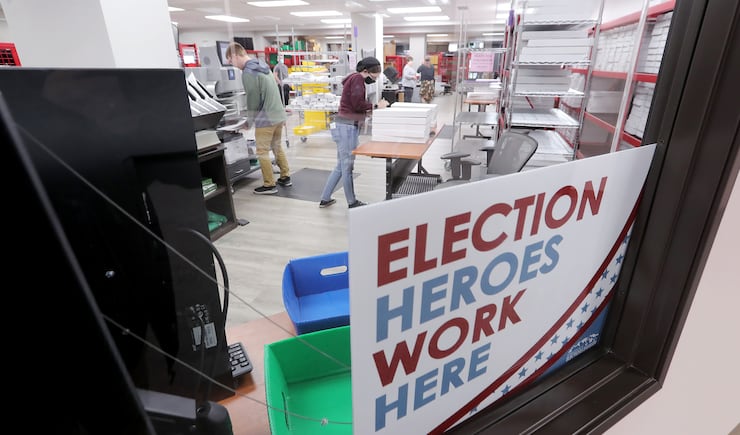
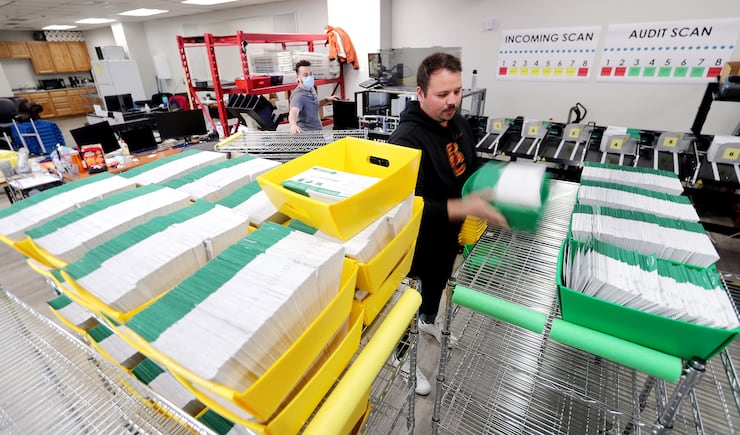
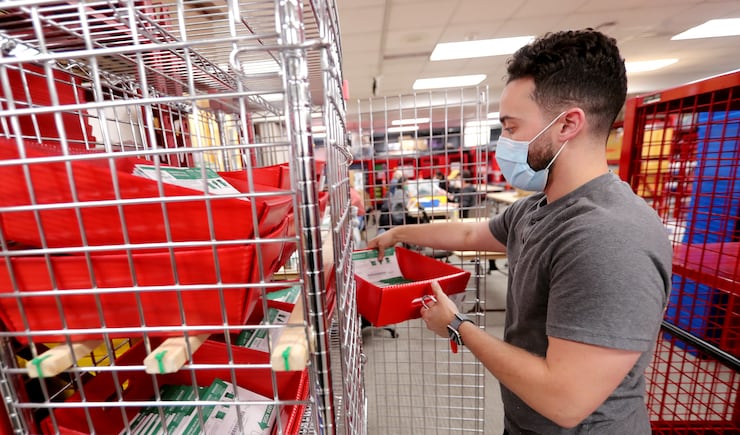
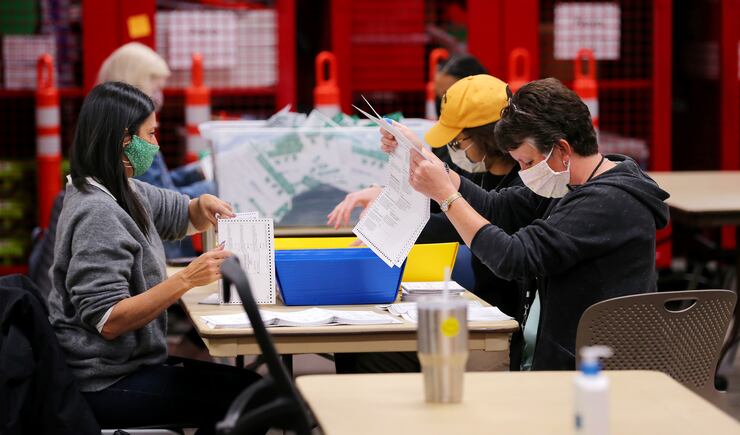
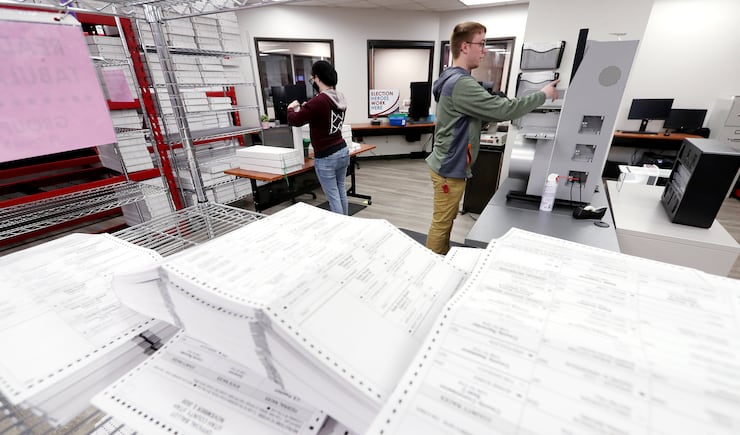
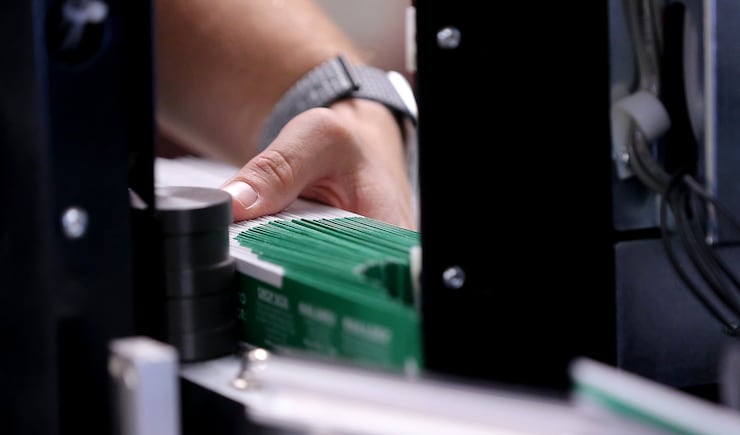
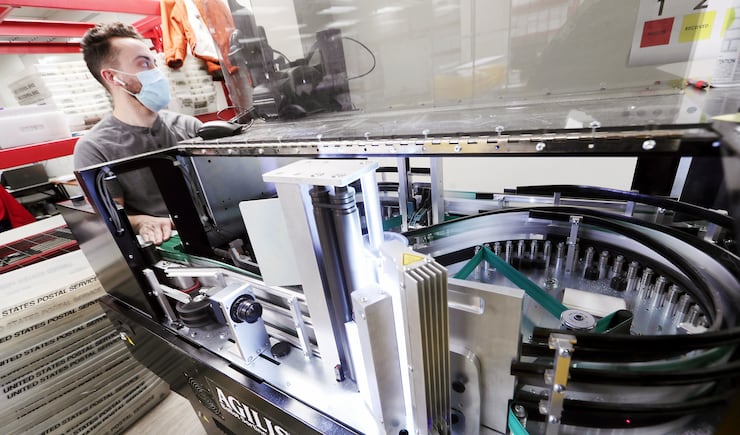
That’s especially as COVID-19 continues to surge in Utah. Amid the pandemic, the Nov. 3 vote centers are limited in numbers and are meant to be reserved only for people who need assistance casting their votes.
Lee urged Utahns to realize there won’t be traditional polling places and voting booths. For those that want to cast their ballots in person, he said the experience won’t be any different than filling out their by-mail ballot because most counties are only using paper voting.
“We are still concerned about people waiting for Election Day and wanting to go to the polls,” Lee said. “Voters should not expect to go to the polls and have a vastly different experience than taking their ballots and dropping it off. ... So to wait for Election Day to get the same ballot you got in the mail could be frustrating to voters, and we want them to avoid that.”
Utah County Clerk/Auditor Amelia Powers Gardner had the same concern, in a conservative county that during the 2018 election under the leadership of a different clerk saw long lines that led Gov. Gary Herbert to call Utah County an “epicenter of dysfunction.” When Powers took office, she pledged to turn Utah County into the “epicenter of innovation.”
Under Gardner’s watch, Utah County didn’t see long lines in either the Super Tuesday primary or the June primary. But Nov. 3 will be the major test.
Even with the added challenges because of COVID-19 — and the national discourse over voting by mail, fueled by President Donald Trump’s attacks on the U.S. Postal Service and accusations, without evidence, that vote by mail is fraught with fraud — Gardner said she hopes Utahns will use their mailed ballots.
Gardner said some of her constituents have posted online, “I don’t trust my paper ballot; I want to vote in person.” But she estimated for every one of those constituents, “there are four or five people who say, ‘We use the paper ballot ... just put it in a drop box.’”
Those who don’t trust the by-mail ballot, Gardner said, tend to be people who haven’t voted since 2018, and still don’t understand how voting by mail works.
“They think it’s some vote by mail conspiracy. What they don’t realize is that’s just literally how we vote now,” she said.
As of late Tuesday afternoon, Utah County voters had sent back 111,373 ballots out of 326,466 active registered voters, according to the Utah County clerk’s website.
In Salt Lake County, Utah’s most populous county, at least 184,492 ballots had been returned as of Tuesday morning out of 570,000 active registered voters, according to the state’s elections website.
Gardner said she’s expecting at least 250,000 Utah County voters to participate in this year’s election, so with over 138,000 voters who haven’t yet cast their ballots, “that can be slightly concerning,” she said.
But Gardner said she’s less concerned about long lines because paper voting is inherently faster than electronic voting. What she’s more concerned about is those who do show up in person will be frustrated they won’t be able to use a voting machine.
Statewide, Lee said ballot return rates look steady “across the board,” with so far higher turnout from rural counties with lower populations. For turnout, Lee’s expecting it will exceed the last presidential election in 2016, which was about 82% of active voters.
“I think we may be doing a little better than that,” he said, noting Utah County did not have voting by mail that year.
“We’ll see as we get closer to Election Day,” he said, “But the rates we have right now are higher than we’ve ever seen, which is very encouraging.”
Utahns who have already returned their ballots can track their status online. A message for those that have been received will read: “Your mail ballot was delivered to your local election official. Please note that your ballot will not be counted until Election Day. Check back at that time for an update.”
Utah law doesn’t allow votes to be tabulated until Election Day, but clerks can process and validate the ballots ahead of time. Lee said voters receiving that message can expect their ballot was processed and clerks have verified their signature. If there’s an issue with verification, clerks are required to contact voters (either by phone, a cure letter, or both) within 24 hours of receiving the ballot.
“If they really want to make sure, they can call their clerks,” he said. “But if it’s been received by the clerk ... there’s very high likelihood their ballot will be counted.”
Utah law requires ballots to be postmarked by the end of the day before Election Day. Post office workers have recommended Utahns return their ballots at least a week in advance of Election Day — so if they haven’t mailed it yet, Lee said voters can ensure their ballots get postmarked on time by walking into the post office or drop them off at secure drop boxes located throughout every county.









